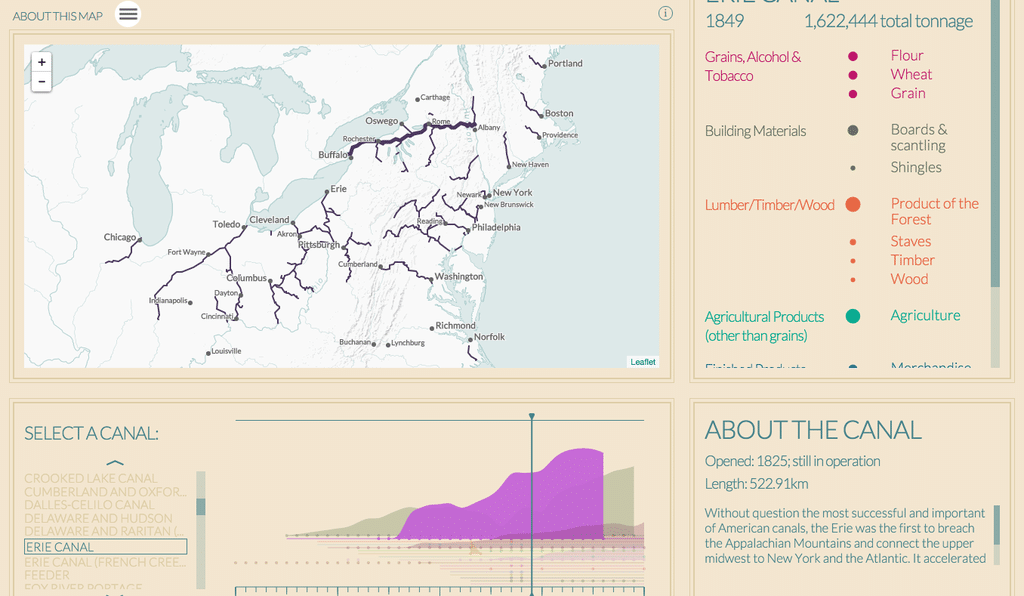
Explore America’s History With These Richly Interactive Maps
Smithsonian Magazine
12.31.2015
Maps are more than geographic sketches of place—they contain stories. The wealth of digital tools available to mapmakers today means that these stories have now evolved to take viewers into the past, show changes over time and serve as detailed sources of information. The University of Richmond’s Digital Scholarship Lab is striving to push geographic storytelling even further with a new set of maps from its “American Panorama” project.
The lab teamed up with cartography firm Stamen Design to create an atlas that spans the shaping of America, writes Laura Bliss for City Lab. They have four maps available to explore now: “The Forced Migration of Enslaved People in the United States, 1810-1860,” “The Overland Trails, 1840-1860,” “Foreign-Born Population: A Nation of Overlapping Diasporas, 1850-2010” and “Canals, 1820-1860.”
The project was inspired by Charles Paullin’s, Atlas of the Historical Geography of the United States, originally published in 1932. That atlas uses almost 700 maps to cover many aspects that shaped the political, social, geological and economic boundaries of the country. Paullin’s editor, John K. Wright, commented at the time that “[t]he ideal historical atlas might well be a collection of motion-picture maps,” reports Jennifer Schuessler for the New York Times. The Richmond lab brought Wright’s desire to life, digitizing Paullin’s atlas in 2013. With “American Panorama,” the lab works to propel the spirit of the project further.
Panorama is a completely digital atlas, not just one converted to the form. “We don’t want it to be faithfully following the look of a historical atlas,” Jon Christensen, a historian at the University of California, Los Angeles and partner with Stamen, tells City Lab. “We want these to look like maps made in the 21st century.”

